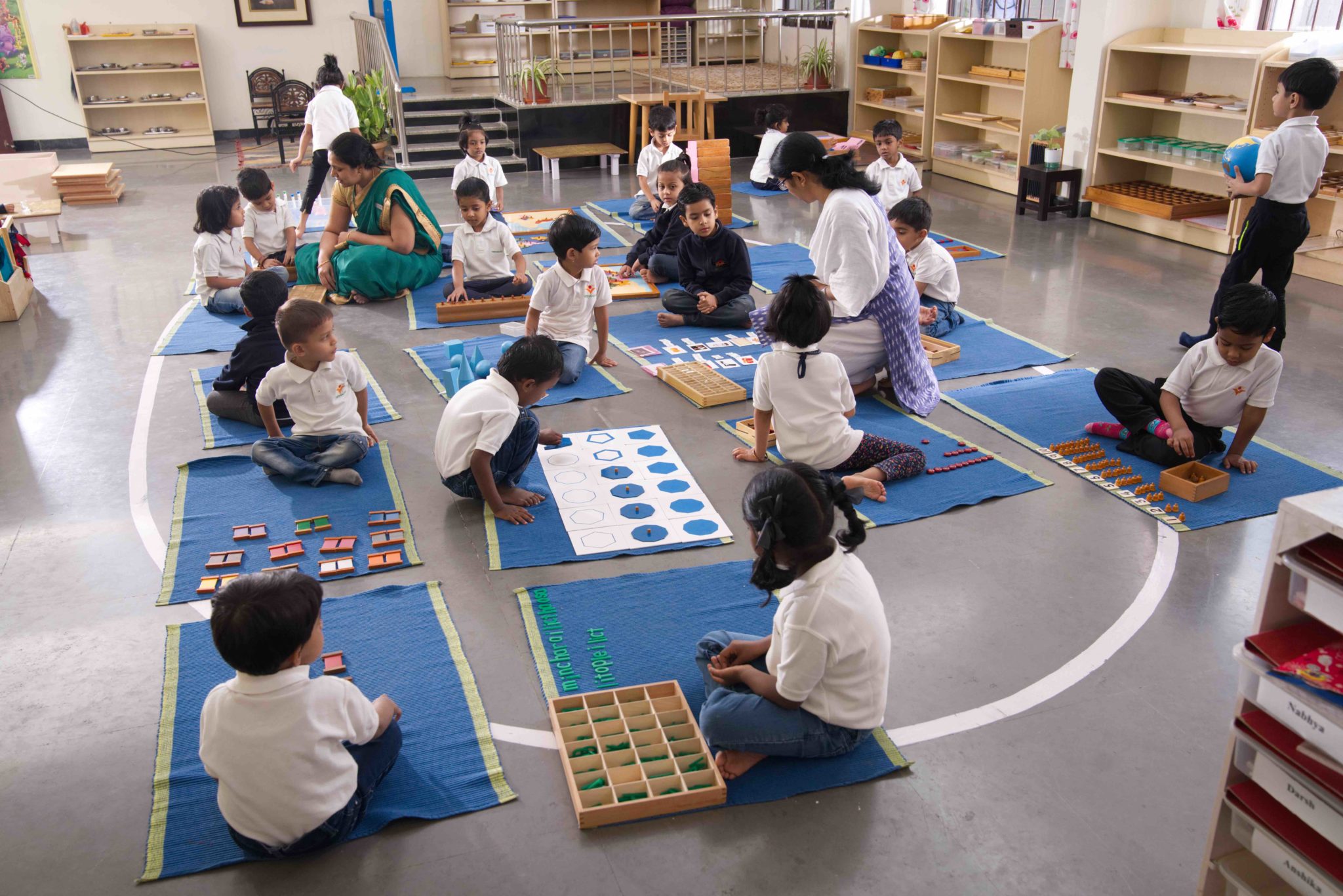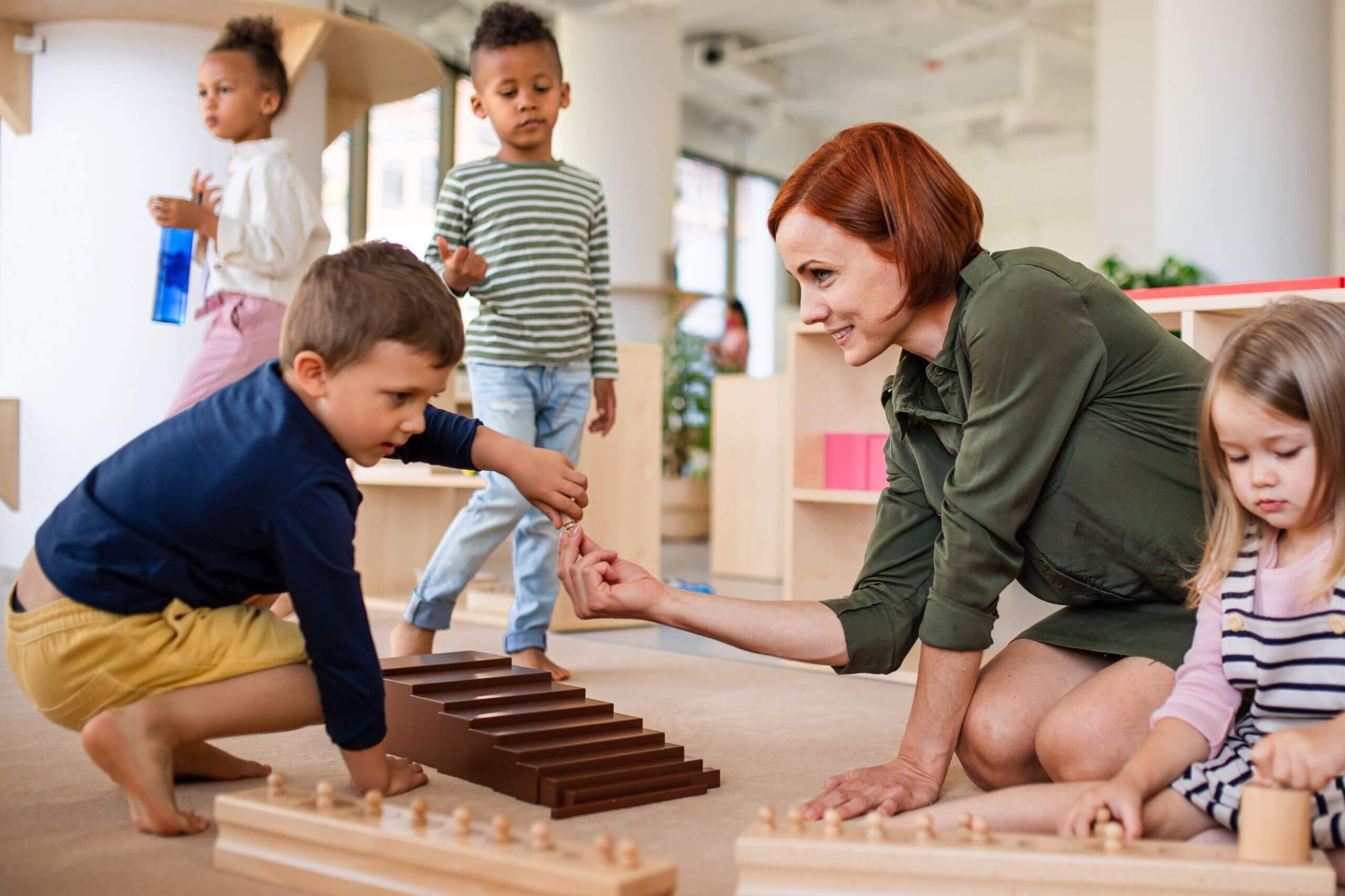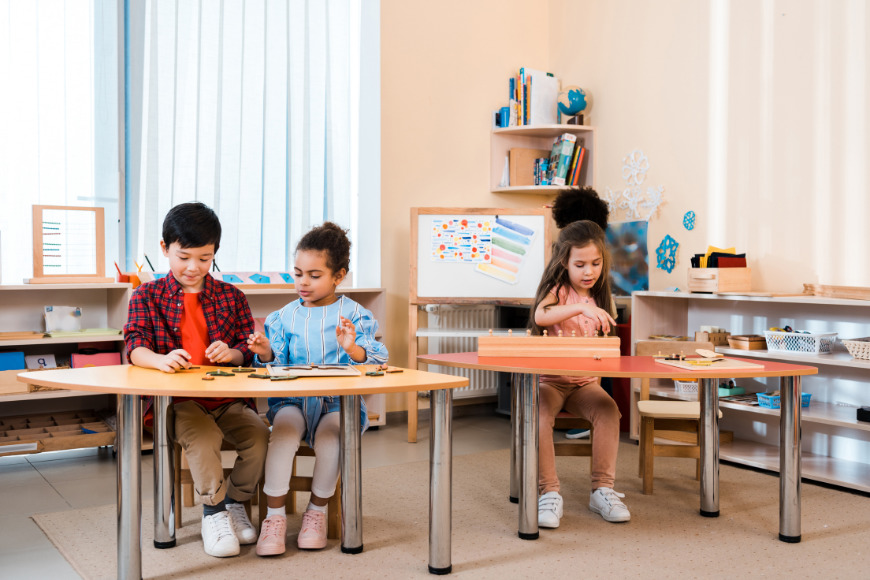Chưa được phân loại
Comparing Montessori and Traditional Classroom Environments
Comparing Montessori and Traditional Classroom Environments reveals the fundamental differences in educational philosophy, teaching styles, and the overall learning experience for students. Education is not a one-size-fits-all process; various models exist to cater to different learning styles and social needs. In this article, we’ll delve deeply into the characteristics of each environment, their approaches to learning, and how they influence student development.

The Philosophical Foundations of Montessori and Traditional Classrooms
Understanding the philosophical underpinnings of both Montessori and traditional classroom environments is essential to grasping their operational differences. Each model has distinct principles that govern teachers’ interactions with students and the pedagogical frameworks employed.
>>>Read more: How to Keep Your Child Engaged? Try a Montessori Busy Board for Sensory Play!
Montessori Philosophy: Child-Centered Learning
At the heart of the Montessori method lies an emphasis on child-centered learning. Founded by Dr. Maria Montessori, this approach encourages children to take the lead in their educational journey.
Children are viewed as naturally curious learners who thrive when given the freedom to explore their interests.
This autonomy allows them to engage with materials and concepts at their own pace, fostering a lifelong love of learning. Montessori classrooms often include mixed-age groups, allowing younger students to learn from their older peers while older students solidify their knowledge by teaching others.
Traditional Philosophy: Teacher-Centered Instruction
In contrast, traditional classroom environments are typically structured around a teacher-centered approach. Teachers often deliver lectures, present information, and guide students through a standardized curriculum.
The focus is usually on achieving specific academic goals, which can sometimes stifle creativity and individualized learning experiences.
In this model, assessment is often reliant on tests and grades, leading to a competitive atmosphere where students are compared against each other rather than encouraged to pursue their unique paths.
The Role of the Educator
Another significant difference between these two environments is the role of the educator.
In a Montessori setting, teachers act more as facilitators or guides rather than traditional authority figures. They observe each child’s progress and interests, helping them find the right materials and activities to foster independent learning.
Conversely, in traditional classrooms, teachers tend to maintain a more authoritative role, delivering content directly to students. This dynamic can result in less interaction between the teacher and individual students, focusing more on completion of tasks rather than personal growth.
Environment and Atmosphere in Montessori vs. Traditional Classrooms
The physical setup of a classroom plays a vital role in shaping the learning experience of students. Both Montessori and traditional classrooms have distinct layouts and atmospheres influencing student engagement and behavior.

Montessori Classroom Design: A Prepared Environment
In a Montessori classroom, the design is intentional and thoughtfully organized, creating what is called a “prepared environment.”
Materials are specifically chosen to promote independent exploration and discovery, with resources placed within reach of students to encourage self-directed learning.
The layout supports movement and interaction, allowing children to choose their activities freely. Cozy workspaces, open areas, and quiet corners provide children with the opportunity to collaborate or dive into individual projects, fostering a sense of community while promoting independence.
>>>Buy now: Activity Cube Montessori Playroom Kids Activities
Traditional Classroom Setup: Structured and Uniform
Traditional classrooms are generally arranged in a more uniform manner, often featuring rows of desks facing the front where the teacher conducts lessons.
This structure promotes a structured environment focused on instruction but may limit opportunities for collaboration and interactive learning.
While there may be designated areas for group work or projects, the overall feel tends to be more rigid, potentially stifling creativity and exploration among learners.
Sensory Experience and Engagement
The sensory experiences offered in both environments also differ considerably.
Montessori classrooms are rich with tactile materials that engage various senses, such as wooden blocks, art supplies, and practical life tools. These materials are designed to build fine motor skills and conceptual understanding, making learning a hands-on experience.
On the other hand, traditional classrooms often rely heavily on textbooks, worksheets, and digital media for instruction. While these methods can provide valuable information, they may lack the same level of engagement found in the Montessori approach.
Learning Styles and Student Development in Montessori and Traditional Classrooms
When comparing Montessori and traditional classroom environments, it is crucial to examine how each setting caters to diverse learning styles and fosters the overall development of students.

Individualized Learning in Montessori Classrooms
One of the defining features of Montessori education is its commitment to individualized learning.
Teachers assess each child’s strengths, weaknesses, and interests, creating personalized learning plans that accommodate varying paces and styles. This flexibility allows students to delve into subjects that ignite their curiosity, providing a more enriching educational experience.
Through this tailored approach, children often develop a stronger sense of self-motivation, responsibility, and critical thinking skills. They learn to set goals, make decisions, and reflect on their learning, equipping them with invaluable life skills.
Standardization in Traditional Classrooms
Conversely, traditional classrooms often prioritize standardized curricula and assessments.
In this model, educators provide a one-size-fits-all approach to learning, which can leave some students feeling unchallenged while others struggle to keep up. The emphasis on grades and test scores can inadvertently create anxiety, limiting students’ willingness to take risks in their learning.
While traditional classrooms do offer opportunities for collaboration, they may not always support individualized learning effectively, resulting in missed opportunities for students to thrive in their unique ways.
Social Interaction and Emotional Growth
Social interactions play a pivotal role in child development, and both Montessori and traditional classrooms provide different avenues for social learning.
Montessori settings foster cooperative learning through mixed-age groups, encouraging older students to mentor younger ones, promoting empathy, communication skills, and teamwork. This collaborative atmosphere nurtures emotional intelligence and helps students learn conflict resolution skills.
In contrast, traditional classrooms may focus more on competition than cooperation, leading to heightened stress levels among students. The potential for comparison can hinder positive peer relationships and emotional well-being, impacting students’ overall development.
Integration of Technology in Montessori and Traditional Classrooms
As technology continues to advance, it becomes increasingly essential to examine how each classroom environment incorporates digital tools into the learning process.

Technology Use in Montessori Classrooms
Though the Montessori method emphasizes hands-on learning and sensory experiences, it does not completely disregard technology.
When integrated thoughtfully, technology serves as an additional tool for exploration and creativity rather than a replacement for traditional learning materials.
In Montessori classrooms, technology is usually introduced at an appropriate developmental stage and is used to complement active learning. For example, children may use tablets for research or educational games, but this interaction remains balanced with real-world experiences and hands-on activities.
Traditional Classrooms and Digital Learning
In traditional classrooms, technology often plays a more prominent role, with teachers frequently utilizing smartboards, projectors, and digital platforms to deliver lessons.
While these tools can enhance engagement and provide access to a vast amount of information, they may sometimes overshadow the importance of direct human interaction and experiential learning.
Moreover, the reliance on technology can lead some educators to prioritize screen-based activities over more tactile or interpersonal educational experiences, potentially diminishing the holistic development of students.
Balancing Technology and Tradition
Finding the right balance between technology and traditional teaching methods is crucial for promoting optimal learning outcomes.
Both Montessori and traditional classrooms can benefit from leveraging technology when it’s aligned with educational goals, fostering creativity, problem-solving, and critical thinking skills.
Ultimately, the choice of how to integrate technology should depend on the specific learning objectives of each environment, ensuring that students receive a well-rounded educational experience.
FAQs
What are the main differences between Montessori and traditional classrooms?
The primary differences between Montessori and traditional classrooms lie in their educational philosophies, roles of teachers, classroom designs, and approaches to learning. Montessori emphasizes child-led education and individualized learning, while traditional classrooms are more teacher-centered and standardized.
How does student assessment differ in Montessori and traditional classrooms?
In Montessori classrooms, assessment focuses on observation and individualized feedback, allowing teachers to track each child’s progress without relying solely on tests and grades. Traditional classrooms, however, often depend on standardized testing and grading systems to evaluate student performance.
Are Montessori classrooms suitable for all children?
Yes, Montessori classrooms can be suitable for many children, as they provide a flexible and engaging learning environment. However, every child’s needs are unique, and some may thrive better in traditional settings, particularly if they prefer structured routines and direct instruction.
Can students transition between Montessori and traditional classrooms easily?
Transitioning between Montessori and traditional classrooms can be challenging for some students due to the differing educational philosophies. Students accustomed to self-directed learning in Montessori may need time to adapt to the more structured and competitive nature of traditional classrooms, and vice versa.
How do Montessori and traditional classrooms address special needs students?
Both Montessori and traditional classrooms can accommodate special needs students, but they do so in different ways. Montessori focuses on individualized learning and adaptive materials, allowing children to work at their own pace. Traditional classrooms often provide specialized support services, such as resource rooms or one-on-one instruction, but may follow a more standardized curriculum.
Conclusion
Comparing Montessori and Traditional Classroom Environments allows us to appreciate the distinct philosophies and methodologies that shape children’s learning experiences. Each framework offers unique advantages and challenges, influencing not only academic success but also emotional development and social skills. As we continue to innovate and evolve in our educational practices, it’s crucial to remember that the best learning environments are those that embrace diversity, creativity, and individuality. Ultimately, the goal is to cultivate inspired, confident, and capable learners who are prepared to navigate the complexities of a rapidly changing world.
